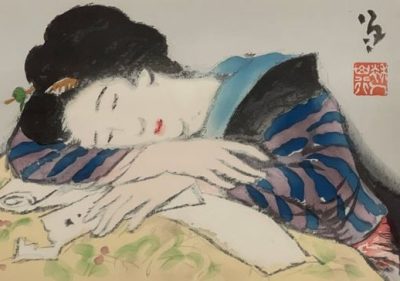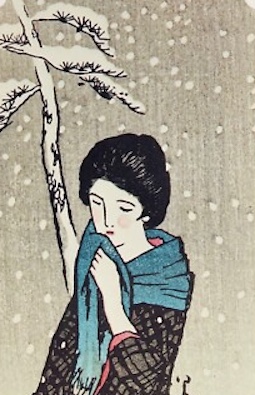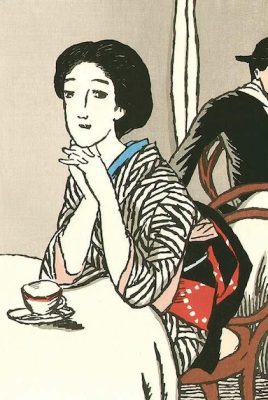Japan Art and Yumeji Takehisa: Influence of Art Nouveau
Lee Jay Walker
Modern Tokyo Times

Yumeji Takehisa (1884-1934) died relatively young. Hence, his final period of his life was in a sanatorium because of his declining health. Therefore, the melancholy in some of his prints and sadness entail a person with mixed emotions toward life.
Sadly, on his failure to light up the international artistic world, his “sadness will last forever.” This can be seen in some of his prints that focus on melancholy, sadness, and ladies being pensive.

The British Museum says, “Painter and print artist. Yumeji was born in Okayama Prefecture, the son of a sake wholesaler; in 1900 the family moved to Fukuoka, where he worked briefly for a brush-maker and learned the art of line which was always to be the basis of his art. In 1901 he was sent to Tokyo to learn business, but by 1905 he gave up his studies to be an artist.”
In the early period of his young adulthood, Yumeji Takehisa had sympathy with socialism and aspects of Christianity. Artistically, he was influenced by Jugendstil (Art Nouveau).

The British Museum says, “His most celebrated paintings included the series ‘Nagasaki junikei’ (‘Twelve Views of Nagasaki’, 1920) and ‘Onna judai’ (‘Ten Female Subjects’, 1921). These were water-colours, but he also worked in oils, brush and ink and ‘Nihonga’ techniques.”
Yumeji Takehisa was a distinctive artist connected to the Taisho Period (1912-1926) of Japanese history.

Modern Tokyo News is part of the Modern Tokyo Times group
http://moderntokyotimes.com Modern Tokyo Times – International News and Japan News
http://sawakoart.com – Sawako Utsumi’s website and Modern Tokyo Times artist
https://moderntokyonews.com Modern Tokyo News – Tokyo News and International News
PLEASE JOIN ON TWITTER
https://twitter.com/MTT_News Modern Tokyo Times
PLEASE JOIN ON FACEBOOK